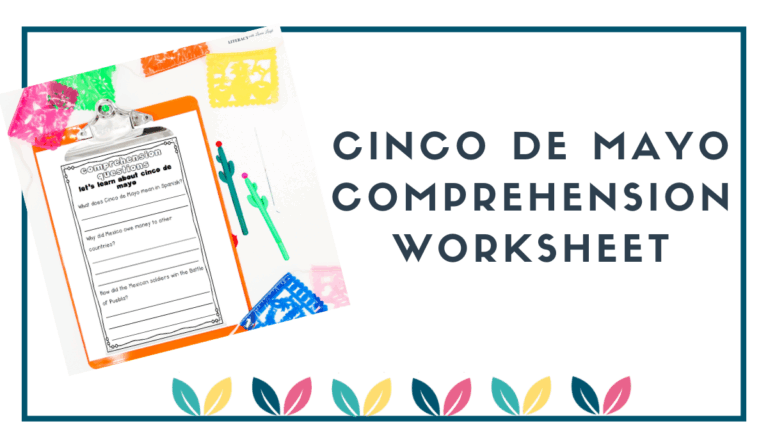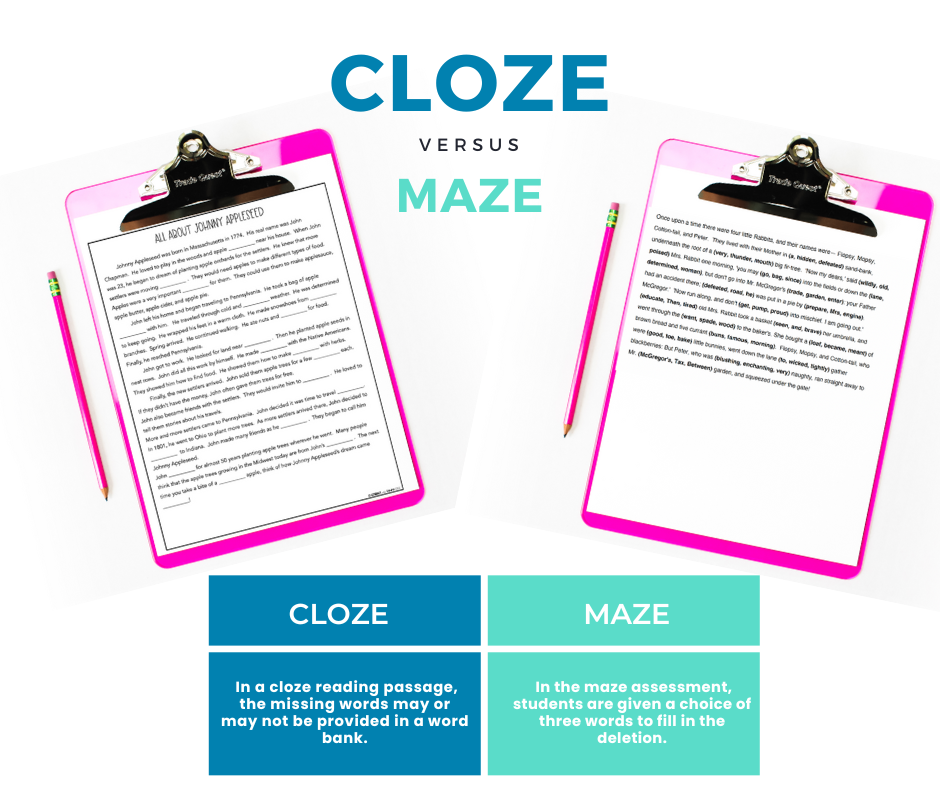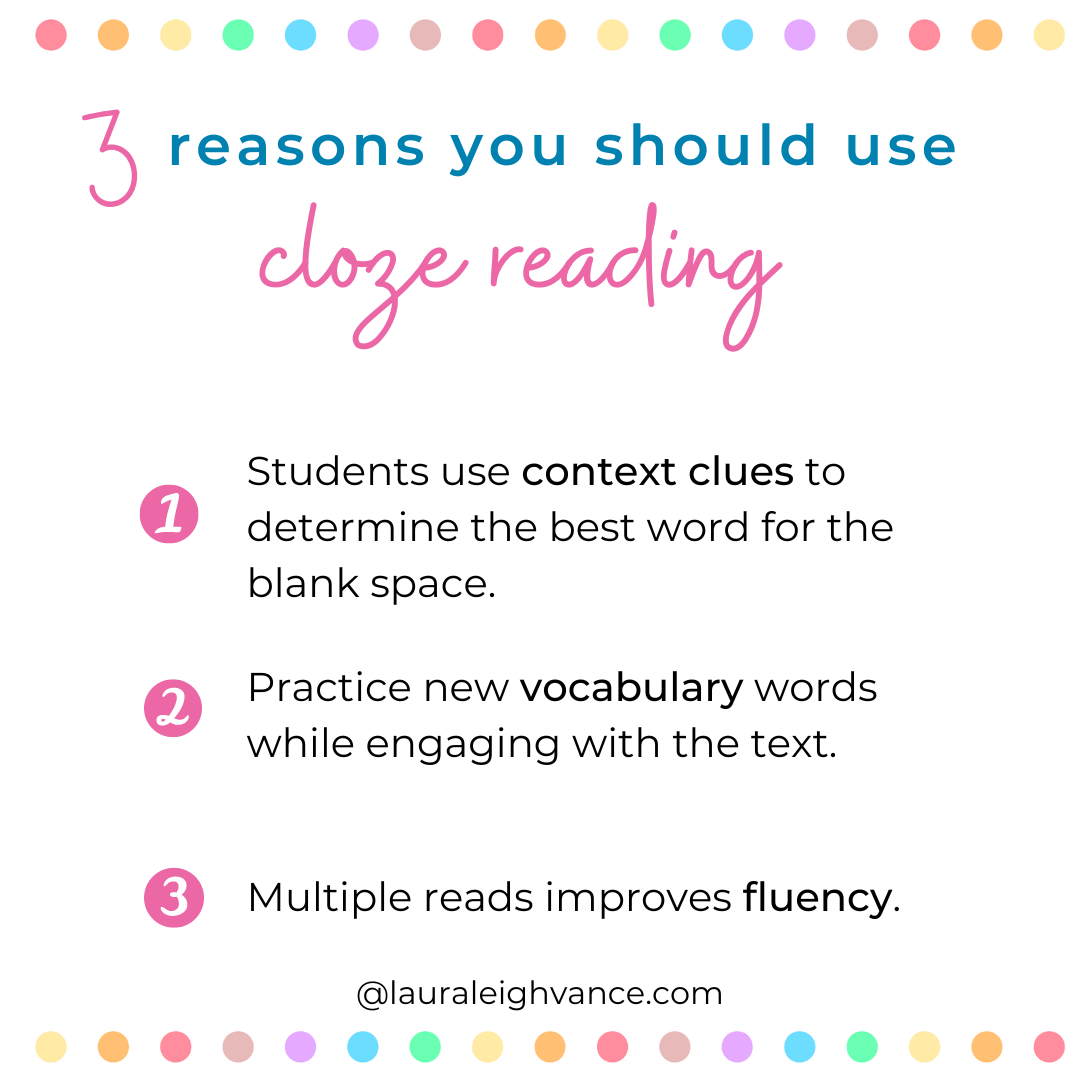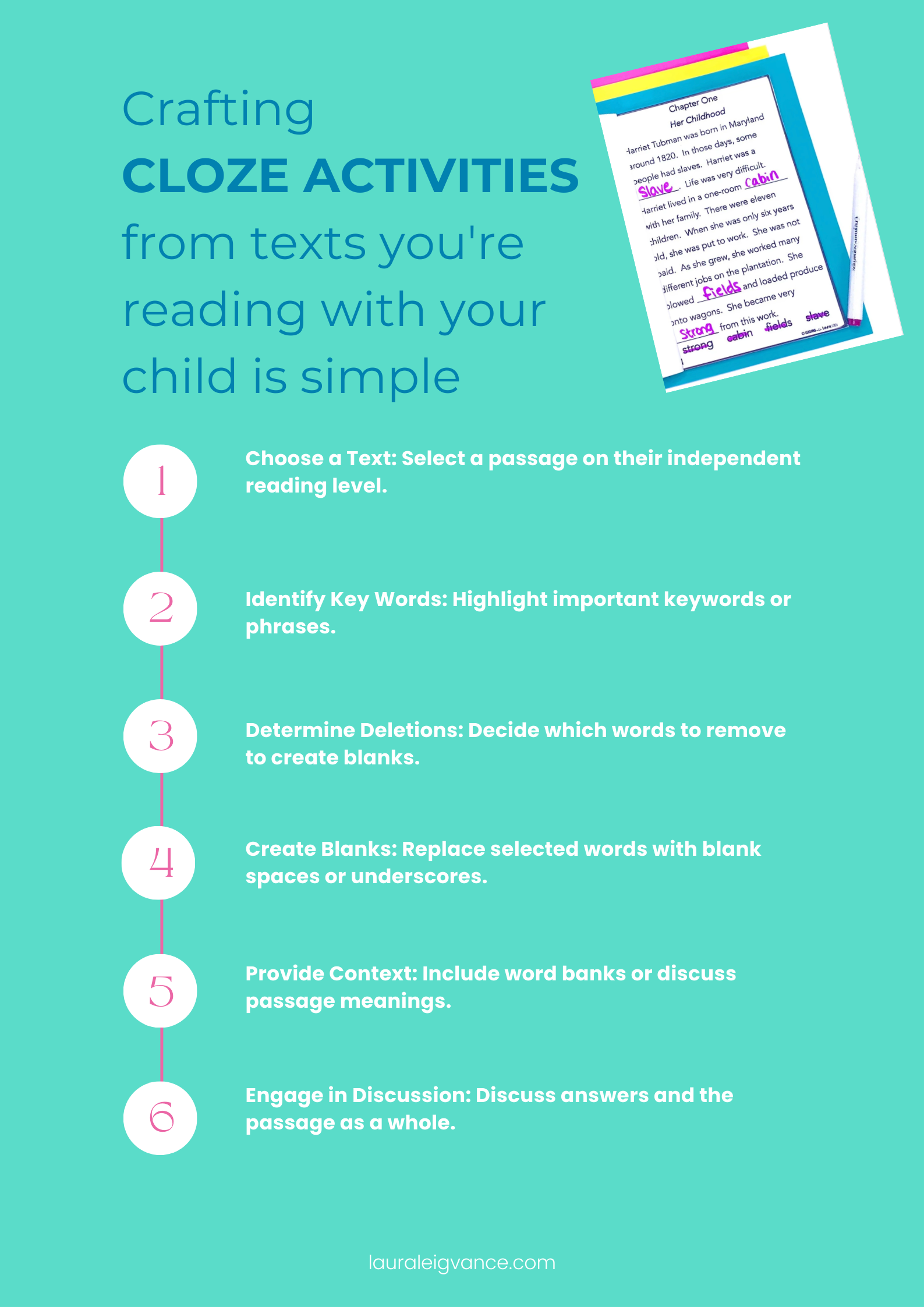
As a homeschool mom, I’m always on the lookout for creative and engaging ways to enhance my daughter’s reading comprehension skills. Enter cloze reading activities with captivating themes! It all started when she requested Valentine’s Day-themed activities for her school day.
From there, I dove into creating decodable cloze sentences, St. Patrick’s Day cloze passages, and even Halloween cloze reading activities.
Let’s explore the ins and outs of cloze reading and how you can incorporate it into your homeschool or classroom today!
Cloze reading involves presenting sentences, passages, or stories where certain words are removed, challenging students to fill in the blanks with the appropriate words. Not only does this technique improve vocabulary and word recognition, but it also enhances critical thinking and comprehension skills.
Having worked as a literacy specialist, I knew the value of cloze and maze assessments in understanding my students’ reading abilities and comprehension levels. Initially developed in 1953, cloze reading gained popularity in the 1970s and 1980s. Cloze assessments present students with passages where certain words are deleted, prompting them to fill in the blanks independently or from a word bank.
Maze assessments, a similar concept introduced later, offer students a choice of three words to fill in each deletion. These assessments are quick to administer and provide valuable insights into students’ reading performance and comprehension levels. Intervention Central even a has a free tool, the Test of Reading Comprehension- Maze Passage Generator, that allows you to create maze passages for your kids.

Although initially designed for measuring readability, research shows cloze activities have enhanced students’ ability to use context clues and provide motivation for reading. That’s a win-win for this homeschool mom!
Sometimes, motivating your kids is half the battle. Creating cloze activities based on my child’s interests led to more productive reading instruction time. So, whether it’s decoding a Valentine’s Day passage or uncovering the mysteries of penguins, cloze reading can be a fun and effective tool for improving your child’s reading comprehension skills.
Here are three undeniable reasons why you should incorporate cloze reading into your teaching:

Creating a cloze activity from a text you’re reading with your child is easier than you think! Here’s a simple guide to help you get started:

After completing a cloze reading passage with your child, engaging in discussion is crucial for reinforcing comprehension and critical thinking skills. Discussion allows your child to reflect on their answers, clarify any misunderstandings, and make connections to the text. By asking open-ended questions and encouraging your child to explain their reasoning, you can help them deepen their understanding of the passage and develop their ability to analyze and interpret text.
Additionally, discussion provides an opportunity for you to model higher-level thinking skills and foster a love of learning in your child.
So take the time to discuss the cloze reading passage with your child—it’s a simple yet powerful way to support their reading development and cultivate a lifelong love of reading.
Want to mix things up a bit? Let’s explore some additional fun ways to use cloze reading activities that can help boost your child’s reading skills:
**Fluency Practice**:
These three steps make for an excellent fluency practice activity! You can even have your child practice with a partner for added fun.
**Read Aloud Cloze**: This activity is perfect for younger kids, like those in kindergarten or first grade, and it’s also great for homeschool families with kids of different ages. By reading the passage aloud, you can model fluency and keep your child engaged.
This activity helps with reading comprehension and encourages critical thinking and discussion skills.
Ready to dive into the exciting world of cloze reading with your child? Take the next step and download your FREE cloze reading activity about polar bears!
This comprehensive resource includes:
Don’t miss out on this opportunity to enhance your child’s reading comprehension skills while having fun learning about polar bears. Click the image below to get your freebie now and embark on an enriching reading adventure with your child!
Looking for ready-made cloze reading comprehension worksheets to add to your toolkit? Be sure to check out my TPT store for a wide variety of options. From seasonal themed passages to animal adventures, these resources are designed to make learning fun and effective!